Description
Nandrolone Phenylpropionate
NANDROLONE PHENYLPROPIONATE are injectable anabolic preparations containing the short-acting nandrolone phenylpropionate ester. Serum nandrolone levels rapidly increase after IM administration with peak serum levels being reached within 24 to 36 hours. NPP clears rapidly avoiding the retention issues associated with the traditional nandrolone decanoate. Nandrolone phenylpropionate accelerates muscle growth, stimulates appetite, increases red blood cell production, and improves bone density. CAS number: 62-90-8. Dosation: 1000mg/10ml.
- Product and Laboratory: Nandrolone Phenylpropionate by Hilma Biocare
- Effects: Increases strength significantly, increases lean muscle mass
- Ingredients: Nandrolone (Ester: Phenylpropionate)
- Form: Injection
- Concentration: 100 mg/ml
- Presentation: 10ml vial (Total box 1000 mg)
- Dosage: 300-600mg per week over the course of 8-12 weeks
Beginners Intermediate Advanced Female 300-400mg per week 400-500mg per week 500-600mg per week 50mg per week - Protection during treatment: tamoxifen (Nolvadex) / Letrozole (if needed) / Clomifene (Clomid) / Aromasin (if needed) / Anastrozole (Arimidex)
- Pct post cycle therapy: tamoxifen (Nolvadex) / HCG / Clomifene (Clomid) / Anastrozole (Arimidex)
- Stack: Dianabol / Trenbolone / Testosterone / Anadrol / Halotestin / Growth Hormone (All Varieties)
- Level: Intermediate

-
Nandrolone Phenylpropionate
Nandrolone Phenylpropionate (NPP): The Complete Guide
Nandrolone Phenylpropionate (NPP) is an anabolic steroid used by bodybuilders, athletes, and those looking to improve their physique. It is part of the nandrolone family, derived from testosterone, and is known for its muscle-building properties. NPP is often preferred for its relatively fast-acting nature compared to other nandrolone esters such as Deca-Durabolin (Nandrolone Decanoate).
In this comprehensive guide, we will explore everything you need to know about Nandrolone Phenylpropionate. From its chemical structure, benefits, and uses to potential side effects, legality, and its impact on the body, this article covers all aspects. Whether you’re considering using NPP for bodybuilding purposes or looking to understand its effects on performance, this guide will give you valuable insights.
What is Nandrolone Phenylpropionate?
Nandrolone Phenylpropionate is an anabolic steroid that belongs to the group of nandrolone esters. It’s similar to Nandrolone Decanoate but differs primarily in its ester group. The “phenylpropionate” ester allows the compound to have a faster release time and shorter half-life in the body, making it ideal for users who want more immediate effects compared to Deca-Durabolin.
It is commonly used to increase muscle mass, improve strength, and enhance performance in sports. It is also used therapeutically for a variety of conditions, including muscle wasting diseases, osteoporosis, and anemia.
Chemical Composition and Structure
Nandrolone Phenylpropionate is a synthetic anabolic steroid and a derivative of the naturally occurring hormone nandrolone. The compound’s full chemical name is 19-Nortestosterone, and it shares structural similarities with testosterone. The addition of the phenylpropionate ester at the 17-beta hydroxyl group changes its release rate and its half-life.
The ester attached to NPP is what distinguishes it from other forms of nandrolone. The phenylpropionate ester is relatively short-acting compared to decanoate, which leads to more frequent injections but faster results.

How Nandrolone Phenylpropionate Works
Nandrolone Phenylpropionate works by increasing the retention of nitrogen in muscles. This creates an anabolic environment that promotes protein synthesis, the process by which the body builds new muscle tissue. Increased nitrogen retention leads to greater muscle growth and recovery, which is why it is popular among athletes and bodybuilders.
It also has a positive impact on red blood cell production and can enhance the immune system, allowing users to recover faster from intense physical activity or injury. Additionally, NPP can help improve bone density, which is why it’s often used in medical treatments for conditions like osteoporosis.
Benefits of Nandrolone Phenylpropionate
Nandrolone Phenylpropionate offers a wide range of benefits, which is why it’s so widely used in the bodybuilding and athletic communities. Below are the key benefits associated with NPP use:
1. Muscle Growth and Strength
The primary reason individuals use Nandrolone Phenylpropionate is for muscle growth. Like other anabolic steroids, NPP increases protein synthesis, leading to muscle hypertrophy (growth). Users typically see noticeable gains in muscle mass within a few weeks of using NPP, especially when combined with a solid training and nutrition plan.
It’s known to be effective for both bulking and cutting phases of bodybuilding. While it promotes muscle gain, it also helps to preserve lean tissue during periods of calorie restriction, making it valuable for cutting cycles.
2. Increased Red Blood Cell Production
Nandrolone Phenylpropionate has a positive impact on red blood cell production, which is essential for transporting oxygen throughout the body. This effect helps to improve endurance and stamina, making it a popular choice for athletes participating in endurance sports like cycling, running, and swimming.
3. Improved Recovery
One of the standout benefits of NPP is its ability to enhance recovery. The steroid increases nitrogen retention, which helps reduce muscle breakdown after strenuous physical activity. This allows athletes and bodybuilders to train more frequently without excessive fatigue or muscle soreness.
4. Fat Loss Support
While Nandrolone Phenylpropionate is not primarily a fat-burning steroid, it can aid in fat loss indirectly. By improving muscle mass and metabolic rate, NPP helps the body burn more calories at rest, contributing to fat loss over time.
5. Joint Health and Lubrication
Nandrolone is known for its ability to improve joint health, and this is one of the reasons it is popular among those who engage in heavy weightlifting. The steroid can increase the production of synovial fluid, which lubricates the joints and reduces pain and inflammation. As a result, it’s sometimes used by bodybuilders to relieve joint discomfort associated with intense lifting.
6. Bone Density Improvement
NPP can help increase bone density, which makes it beneficial for those suffering from osteoporosis or similar conditions. This is one of the reasons it is used therapeutically in medical treatments.
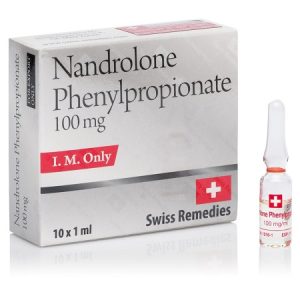
How to Use Nandrolone Phenylpropionate
Nandrolone Phenylpropionate is typically administered through intramuscular injection, and the dosage and frequency of administration will depend on the individual’s goals and experience level. It is important to follow a precise dosing schedule to maximize the benefits and minimize the risks of side effects.
Dosage Guidelines
The typical dosage for Nandrolone Phenylpropionate ranges from 50 to 100 mg every other day, or up to 300-400 mg per week. Beginners may start with a lower dose to assess tolerance, while more experienced users may increase their dosage to achieve more substantial gains.
NPP is fast-acting, with a half-life of about 4.5 days, which is why it requires more frequent injections compared to longer-acting steroids like Deca-Durabolin, which can be injected once a week.
Cycle Length
An NPP cycle typically lasts between 8 and 12 weeks, depending on the individual’s goals. Some users may opt for a “front-loading” approach, where they begin with a higher dosage for the first week before tapering off to a maintenance dose.
Stacking NPP with Other Compounds
Many bodybuilders stack NPP with other steroids to maximize its effects. Common compounds used in conjunction with NPP include testosterone, Dianabol, and Trenbolone. Stacking NPP with testosterone helps maintain balanced hormone levels while maximizing muscle growth.
It’s important to note that stacking should be done cautiously and with proper research, as it can increase the risk of side effects.
Side Effects of Nandrolone Phenylpropionate
Like all anabolic steroids, Nandrolone Phenylpropionate comes with potential side effects. While NPP is considered to have a lower risk of certain side effects compared to other steroids, it still carries significant risks. Below are the most common and notable side effects associated with NPP use:
1. Hormonal Imbalance and Estrogenic Side Effects
NPP is a derivative of nandrolone, which can convert into estrogen in the body. As a result, users may experience estrogenic side effects such as water retention, gynecomastia (male breast development), and high blood pressure. To mitigate these effects, many users take an aromatase inhibitor (AI) such as Arimidex to prevent estrogen conversion.
2. Testosterone Suppression
Like other anabolic steroids, NPP suppresses the body’s natural production of testosterone. After a cycle of NPP, users will likely experience low testosterone levels, which can lead to symptoms like fatigue, depression, and decreased libido. Post-cycle therapy (PCT) is often necessary to help restore normal testosterone production after an NPP cycle.
3. Cardiovascular Issues
Steroids like NPP can negatively affect cholesterol levels, leading to a decrease in HDL (good cholesterol) and an increase in LDL (bad cholesterol). This can raise the risk of cardiovascular issues, including heart attacks and strokes. Monitoring cholesterol levels during an NPP cycle is essential.
4. Liver Toxicity
While NPP is not as liver toxic as oral anabolic steroids, it still can have an impact on liver function, especially when used in high doses or for extended periods. Regular liver function tests are recommended during use.
-
5. Androgenic Side Effects
As an androgenic steroid, NPP can cause side effects like acne, hair loss, and increased body hair growth. These effects are typically more prominent in individuals who are genetically predisposed to male pattern baldness.

Rare but Serious Side Effects
- Cardiovascular Damage
Long-term use of anabolic steroids, including NPP, can lead to an increased risk of cardiovascular diseases, such as heart attacks, strokes, and arrhythmias. The use of steroids can alter lipid profiles by increasing LDL (bad cholesterol) levels and decreasing HDL (good cholesterol), which can contribute to the hardening of the arteries (atherosclerosis) and other heart-related issues. Regular cardiovascular health checks are essential during prolonged cycles of NPP. - Testicular Atrophy
Due to the suppression of natural testosterone production, prolonged use of NPP can lead to testicular atrophy (shrinkage of the testicles). This is a common side effect of anabolic steroids, and it can be reversed once the cycle ends and testosterone production is restored, particularly with the help of post-cycle therapy (PCT). - Blood Clotting Issues
Some anabolic steroids, including NPP, can affect blood clotting and increase the risk of thromboembolic events (blood clots). This may lead to complications such as deep vein thrombosis (DVT), pulmonary embolism, or stroke. While the incidence of this side effect is rare, it is still important for users to monitor their cardiovascular health and consult a doctor if any symptoms arise. - Kidney Damage
Long-term steroid use can place stress on the kidneys, particularly if combined with other substances that are nephrotoxic (toxic to the kidneys). Although NPP is not as harsh on the kidneys as some other steroids, it is still crucial to monitor kidney function during and after a steroid cycle.
Post-Cycle Therapy (PCT) After Using Nandrolone Phenylpropionate
Because Nandrolone Phenylpropionate (like other anabolic steroids) suppresses the body’s natural production of testosterone, users typically require Post-Cycle Therapy (PCT) to restore normal hormone levels after completing a cycle. PCT is essential for minimizing side effects, such as low libido, fatigue, and mood disturbances, as well as for maintaining the muscle gains made during the cycle.
A typical PCT for NPP may include the following:
- Selective Estrogen Receptor Modulators (SERMs)
SERMs, such as tamoxifen (Nolvadex) or clomiphene citrate (Clomid), are commonly used in PCT to help stimulate the body’s natural production of testosterone by blocking estrogen receptors in the brain, which then signals the pituitary gland to produce more luteinizing hormone (LH) and follicle-stimulating hormone (FSH). These hormones stimulate the testes to produce more testosterone. - Aromatase Inhibitors (AIs)
If there is any concern about estrogenic side effects during the cycle, such as gynecomastia or water retention, an aromatase inhibitor like aromasin or arimidex may be used. These drugs block the enzyme aromatase, which is responsible for converting excess testosterone into estrogen. - Human Chorionic Gonadotropin (hCG)
In some cases, hCG is used during or after a steroid cycle to help stimulate the testes directly to produce more testosterone. While hCG is not always necessary in PCT, it can be beneficial for maintaining testicular size and function, especially after long cycles of testosterone suppression. - Natural Testosterone Boosters
Some athletes and bodybuilders opt to use natural testosterone boosters such as tribulus terrestris, fenugreek, and D-aspartic acid during their PCT. While these supplements are not as potent as prescription options like SERMs and hCG, they can support the body’s natural recovery process.
A typical PCT protocol for NPP may last 4-6 weeks and should begin shortly after the last NPP injection, once the compound has cleared the system. The goal of PCT is to help restore the body’s natural hormone levels, mitigate side effects, and preserve muscle mass.
Legal Status of Nandrolone Phenylpropionate
The legal status of Nandrolone Phenylpropionate varies by country. In many places, including the United States, it is classified as a controlled substance, and its use is restricted to medical purposes under the supervision of a healthcare provider. For athletes and bodybuilders, obtaining NPP without a prescription is illegal and may result in penalties.
In some countries, anabolic steroids are regulated differently, and NPP may be available for purchase with a prescription for legitimate medical purposes. However, the use of NPP in competitive sports is banned by most sports organizations, including the International Olympic Committee (IOC) and the World Anti-Doping Agency (WADA). Testing positive for NPP can lead to suspensions, fines, or lifetime bans for athletes.
Conclusion
Nandrolone Phenylpropionate (NPP) is a powerful anabolic steroid with a variety of therapeutic uses, particularly in the treatment of muscle-wasting diseases, osteoporosis, and anemia. It is also popular among bodybuilders and athletes for its ability to promote muscle growth, increase strength, and enhance recovery times.
While NPP can be effective in promoting gains in muscle mass and performance, it is important for users to be aware of the potential side effects, which include cardiovascular issues, hormone suppression, and liver strain. Proper dosing, frequent monitoring, and post-cycle therapy (PCT) are essential for minimizing the risks associated with steroid use.
As with any anabolic steroid, the decision to use NPP should be carefully considered, and it is always best to consult with a healthcare professional before starting any steroid regimen. For those using it for medical purposes, NPP can provide significant benefits under the guidance of a doctor, while for athletes and bodybuilders, it should be used responsibly and in compliance with the laws and regulations surrounding its use.
Always remember that steroid use comes with risks, and the best approach to achieving fitness goals is through a balanced diet, consistent training, and adequate recovery.
What is the Half-Life of Nandrolone Phenylpropionate?
The half-life of Nandrolone Phenylpropionate (NPP) is typically around 4.5 to 5 days. This is relatively short compared to other forms of nandrolone, such as Nandrolone Decanoate, which has a much longer half-life of approximately 6-8 days. The shorter half-life of NPP means that it is cleared from the body more quickly and may require more frequent dosing, typically every 2-3 days, to maintain stable blood levels and maximize its anabolic effects.
Why Does Half-Life Matter?
The half-life of a steroid determines how long it stays active in the body and influences how often it should be administered. With NPP’s shorter half-life, users often need to inject the compound more frequently than longer-acting esters. This can impact the convenience and comfort of a steroid cycle, but it also means that NPP’s effects can be more immediate and noticeable compared to slower esters.
For individuals looking for quick results, Nandrolone Phenylpropionate’s relatively rapid onset of action can be advantageous. However, the short half-life may also contribute to more frequent fluctuations in blood levels, which some users find undesirable. Proper timing and dosing strategies are key to achieving consistent, positive results.
Half-Life and Benefits of NPP
The main benefit of NPP’s half-life is that it allows for faster clearance from the body, reducing the potential for prolonged side effects. Since the compound leaves the system more quickly, it may also allow users to more effectively manage estrogen-related side effects such as water retention and gynecomastia (male breast tissue growth). Additionally, the shorter half-life can provide a more controlled window for post-cycle therapy (PCT) after a steroid cycle, helping users recover faster and reduce the risk of side effects during the transition back to natural testosterone production.
Conclusion
The half-life of Nandrolone Phenylpropionate plays a crucial role in its effectiveness and dosing schedule. With a half-life of approximately 4.5 to 5 days, NPP offers quick results, but also requires more frequent injections to maintain stable blood levels. Understanding NPP’s half-life is essential for users aiming to optimize their steroid cycle while minimizing side effects and maximizing gains. As with any steroid, proper use, monitoring, and post-cycle care are important for maintaining health and safety.
- Cardiovascular Damage




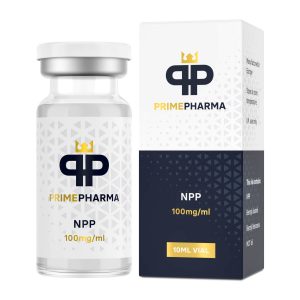

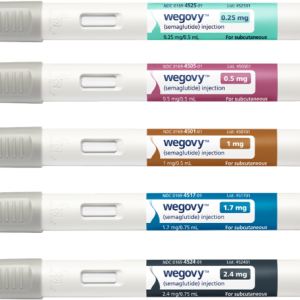
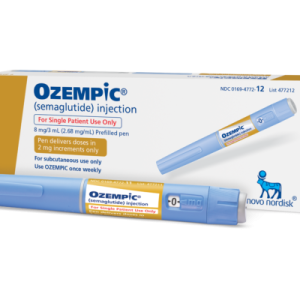





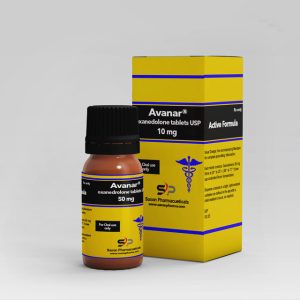



Reviews
There are no reviews yet.